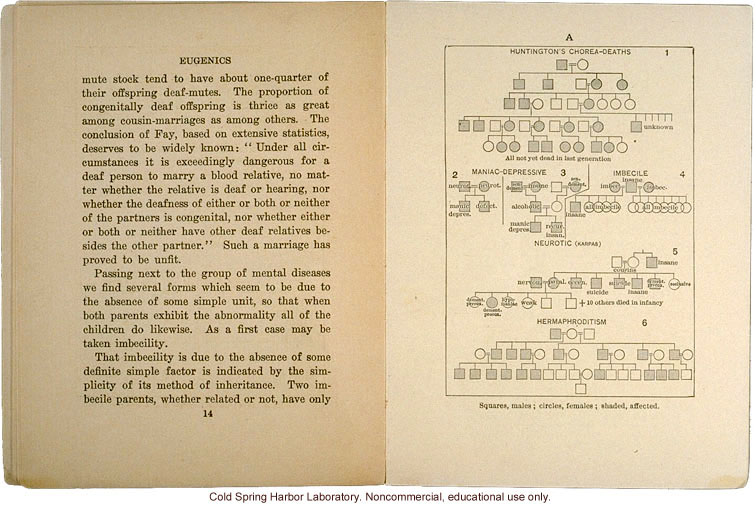[left side]
Eugenics
mute stock tend to have about one-quarter of their offspring deaf-mutes. The proportion of congenitally deaf offspring is thrice as great among cousin-marriages as among others. The conclusion of Fay, based on extensive statistics, deserves to be widely known: "Under all circumstances it is exceedingly dangerous for a deaf person to marry a blood relative, no matter whether the relative is deaf or hearing, nor whether the deafness of either or both or neither of the partners is congenital, nor whether either or both or neither have other deaf relatives besides the other partner." Such a marriage has proved to be unfit.
Passing next to the group of mental diseases we find several forms which seem to be due to the absence of some simple unit, so that when both parents exhibit the abnormality all of the children do likewise. As a first case may be taken imbecility.
That imbecility is due to the absence of some definite simple factor is indicated by the simplicity of its method of inheritance. Two imbecile parents, whether related or not, have only
14
[right side]
A
[pedigree chart]
Squares, males; circles, females; shaded, affected.
[end]


